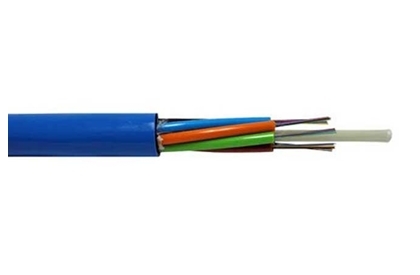New fibre requirements in AS/NZS 3080:2013

The overall document has leapt from 132 pages (2003) to 200 pages as a result of this.
As AS/NZS 3080 is a direct descendant of ISO/IEC 11801, all additional requirements, and further guidance of the parent document specific to Australia and New Zealand, are captured in Appendix ZA as per the previous edition.
ADVERTISEMENT
Most changes and updates are predominantly focussed around Optical Fibre, with the only significant Copper addition being that of the dreaded alien crosstalk requirements for copper classes EA and FA (alien crosstalk of Class F is considered to be as good as the alien crosstalk performance for class EA). Thankfully for installers and customers alike, the requirement for this time consuming test sequence is addressed within the new Standard. It states that if cable manufacturers can better the values for coupling attenuation as stated in 6.4.15.1, then the requirement is met by design (of the cable) therefore negating the need for AXT testing. Of course, it’s not just a case of saying that the cable outperforms the requirements – it has to be backed up by a Statement of Conformance from that cable vendor which is based on laboratory reports.
Something also worthy of note in the document is Table 32 where it shows maximum and minimum values for horizontal cables. The area of concern here is where it shows that the minimum length of the Floor Distributor to Consolidation Point to be 15m. This figure is also present for the Consolidation Point to Telecommunications Outlet. What if a situation arose where the distance between the CP and TO was less than 15m? Well, there is actually a line preceding that table that states the figures “…do not represent absolute restrictions on the implementations of channels and permanent links, but may be used for guidance in reference implementations”. Annex ZA further expands on this by saying that Manufacturers can again use a statement of conformance to state that their cabling can better those figures too.
On the Optical Fibre side there have been far more additions, although one would argue they are easier to comprehend and work with when compared with the copper situation above.
On the performance of Singlemode, OS2 has now made an appearance in the document specifying maximum attenuation of 0.4dB/Km, although the use of B1.1 fibre is still allowed in the cable potentially causing problems for any system operating in the 1383nm region (WDM systems typically). It would be a fair comment to make however, that most cable vendors no longer put this fibre in their cable anyway, but it’s a good idea to ask.
OM4 has also been included and brings with it some additional benefits over other Multimode fibre that can be found in various tables, which highlight its application specific advantages by way of increased Effective Modal Bandwidth and in some instances its increased channel insertion loss allowance.
With the huge uptake in pre-polished connectors such as the FAST connect and FUSE connect, Annex ZA pre-empts the inevitable market questions around the loss over these time saving connectors, stating that the splice and the connector shall be two separate components for the purposes of calculating an optical attenuation loss budget. It also says that Optical Return Loss testing and reporting for mated components in a link or channel is optional, which will dramatically reduce testing times and costs as an OTDR is only required if the client requests ORL results. Whilst on OTDR results, ORL requirements for components in close proximity have also been addressed. Close proximity is defined as “two or more connectors within the deadzone of an OTDR” which would typically be an MTP/MPO cassette or short patch leads. In this situation, the sum of the loss of the 2 or more connectors shall be less or equal to the ORL of one connector as defined in Table 79.
Table 79 also holds the only reference to Encircled Flux (EF) in the entire document. EF has been around for over a year now in 14763-3 2012, although the uptake of testing in this manner has been somewhat lethargic. Technically speaking, if you are testing MMOF today, it should be being done to EF launch conditions and you should be able to present evidence of the device used to achieve it to the client when asked.
Additionally, there is still a great deal of work continuing in the Standards community. Some of the issues being discussed include:
Cat 8 cabling – the rumour mill is churning away with the requirements for this new category of cabling and what it is to be used for. As it stands, there may be 2 Classes of Cat 8 cabling, both of which may support 40GBaseT up to 30m on either 6a or 7a components. There is still much work for the Task Force to do on this, so for now it is only a consideration.
AIM – Automated Infrastructure Management. These are electronic records keeping systems that assist with patching records, available switch ports and attached devices and come in a variety of flavours by some vendors already. The intention is that if this system is to be put into a Standard, it will be put into ISO/IEC 14763-2 IT Implementation and Operation of customer premise cabling – Part 2: Planning and installation as an appendix.
-
ADVERTISEMENT
-
ADVERTISEMENT

